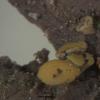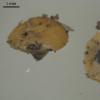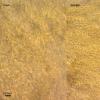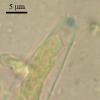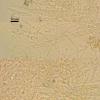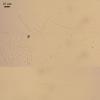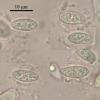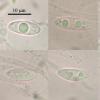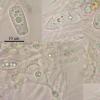
12-11-2025 09:25
 Viktorie Halasu
Viktorie Halasu
Hello, I need help with a pale terrestric Pseudom

11-11-2025 20:16
Bohan JiaHi, lastly I have found these tiny yellow decayin

09-11-2025 13:20
Hello.A tiny ascomycete, appearing as erupting gra

08-11-2025 00:29
 Francois Guay
Francois Guay
I found this species in Quebec, Canada, on herbace
I do not see clear clamps there (i would say clampless), spores with gelatinous sheath (but not always), and there are abundant budding at maturing.
Collected on pine wood (Pinus sylvestris) in bog, N61,066591° E69,457326°, 07.09.2012.
Apothecia turbinate, with short stipe, hymenium surface convex, growing in clusters (2-4), 2,5-3,5 mm in diam, hymenium surface bright yellow, smooth, outer surface yellowish, pale, brownish at stipe base.
Outer layer of excipulum from textura globosa (at base) to porrecta (edge), from thick-walled cells; asci cylindrical, long, with amyloid pore, about 167 x 9; spores very variable in shape, disarticulating in two parts, and budding when overmature, with gelatinous sheath (not in all spores), with several medium guttules and amorphous oil content, 1-2 septated when overmature, mean shape fusoid, with obtuse ends, measurement for 10 mean spores: 14,2 x 5,3; conidia at long stalks, 5 x 3; paraphyses cylindrical, not enlarged to the tip, rarely branched, many segmented (about 5-7 septa), without or with some minor guttules in upper part (but bad seen in rehydrated stuff), about 150 x 2,3.

There the spores were in water, and in KOH (in different pictures), the same "approximate <10" concentration.? The specimen was stored dry before.

